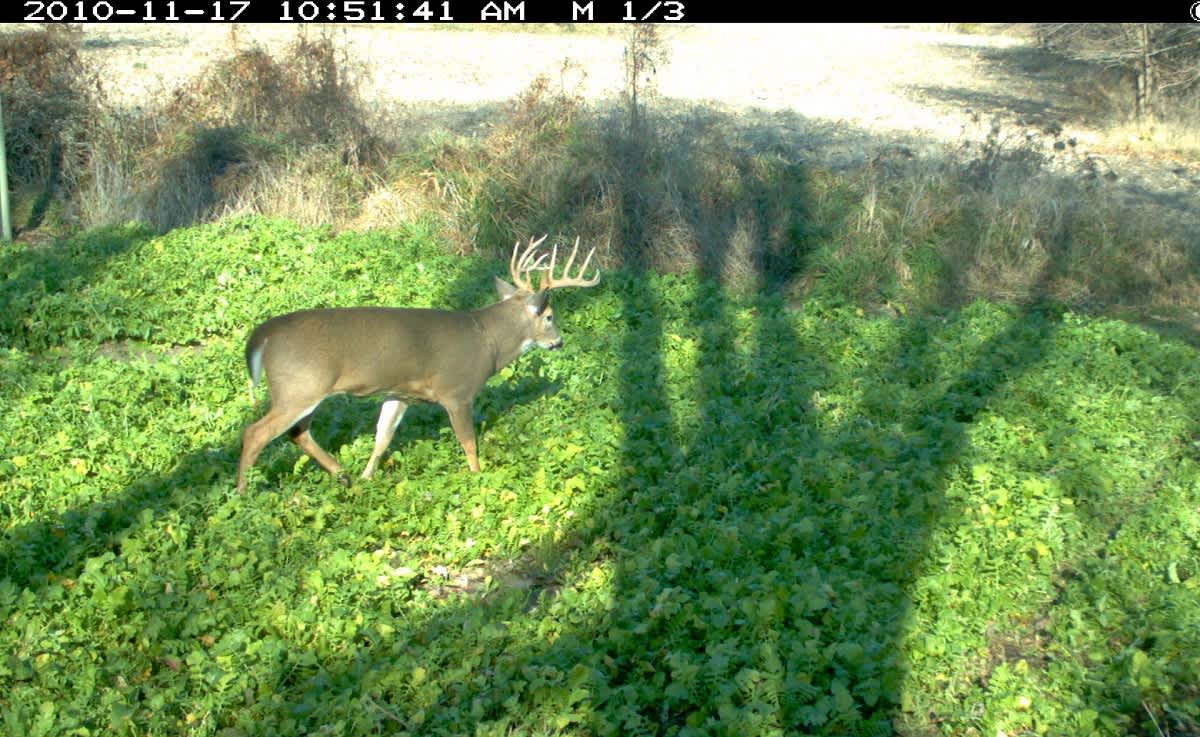A Recipe for the Perfect Fall Food Plot
Bernie Barringer 08.19.15

Planting food plots on your hunting property has many year-round benefits. The right food in the spring and summer can keep does and fawns on your property, where they will remain into the fall when bucks are cruising. Bucks will visit spring and summer food plots all year if they are in the right location and have secure cover nearby.
But if you want to plant a food plot that will bring deer in during the actual hunting season, one that will attract both bucks and does well into the fall and early winter, it’s hard to beat planting brassicas, a family of plants that have a lot of appeal when the deer are putting on weight for the upcoming winter.
The brassica family includes mostly vegetables with root tubers such as turnips, sugar beets, forage rape, and radishes. It also includes plants that are not commonly used for food plots such as cabbage, broccoli, and cauliflower. While these three are not usually considered food plot plants, deer do love them—just ask anyone who has tried to grow them in a garden that deer have access to.
Timing is everything
The key to success with brassicas, according to Don Higgins of Real World Wildlife Seed, is putting them in the ground at the right time. He says the plants are most palatable to deer once they have been hit with a hard frost. Freezing these plants sends sugars to the leaves, which really draws deer to them. If the plants get too big before a frost, the leaves become woody and not as attractive to deer.
Proper timing will depend on when you can expect the first hard frost. Here in northcentral Minnesota, I plant brassicas in late July, which gives them six to eight weeks of growth before the first frosts improve the attraction of the plants. The archery season begins in mid-September here, so the timing works out about right for early-season hunting.
Higgins is in central Illinois, and he plants around the first of September because their first frosts are normally in late October, similar to the majority of the Midwestern whitetail states. Time your plantings accordingly.
As the hunting season progresses, deer will continue to feed on the brassica leaves right up until either they are gone or they get covered with too much snow. Deer know food is there, so they will paw through a foot or more of snow to get to the leaves.
Once the leaves are gone, the freezing/thawing action of the plants has now made the bulbs much more palatable also. In the late part of deer season, even into January, deer will devour bulbs as long as they can get to them.
Plant a mix

It’s a good idea to plant a mix of the various kinds of bassicas. While turnips and radishes are not very palatable until they have experienced some freezing, sugar beets and forage rape will be eaten by deer right away. This helps spread out the length of the attractiveness of the food plot over a much longer period.
Higgins also recommends that you plant other foods in with brassicas. Some cereal grains (such as oats or triticale) are good choices because they will mature at different rates and add variety.
Many people know how much deer love brassicas, so they want to get as much in the ground as possible. Higgins warns against planting them too densely. They need space to grow those bulbs, he says, and if you plant too many seeds to the acre, they will be competing for space which will actually reduce the amount of overall food available.
Additonal advantages
Brassicas break up the soil for the following year; the bulbs will break through the toughest hardpan so the soil can hold water better. Planting brassicas helps aerate the soil so the following year’s plantings do better.
Breaking up the soil in this way will also release nutrients that cannot be accessed in any other way. The tubers can access nutrients that other plants cannot because the roots go so deep. When you see that bulb, you might think that’s a very shallow root, but these plants have a thin taproot that can go two to three feet deep to get water and nutrients.

The wide leaves of the sugar beets and turnips really help shade out weeds. The canopy they create significantly reduces the ability of weeds and undesirable grasses to get enough sunlight to thrive.
If you have a place to plant them, brassicas will definitely improve the quality of your deer herd, keep bucks on your property all through the fall, and offer you a chance to shoot one by putting them right where you want them.
Follow Bernie’s bowhunting adventures on his blog, bowhuntingroad.com.

